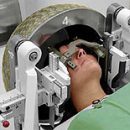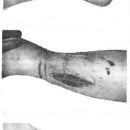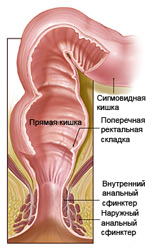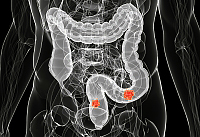How to diagnose lung cancer? What are modern research methods? Answers to these questions you will find in the article.
Content
Light cancer diagnosis
If the lung cancer is suspected, then the doctor will appoint a survey to find out whether you have a tumor or not. If necessary, a biopsy of the lung fabric will be performed, which will confirm or eliminates the diagnosis of cancer and will also allow you to choose a method of treatment. If the diagnosis of cancer is confirmed, it is necessary to conduct a more detailed examination to determine the degree of dissemination of the disease.
With radiopiological and isotope studies X-rays are used, magnetic fields, sound waves or radioactive substances for the purpose of inspection of internal organs and tissues. To clarify the prevalence of lung cancer use X-ray, computed tomography, magnetic resonance tomography, positron emission tomography, angiography and bones scanning.
Below, the methods are used to ensure that the identified education as a result of the previous survey is precisely cancer. In addition, the type of lung cancer is specified and its distribution degree.
Cytological examination of sputum With the help of a microscope, it allows you to detect tumor cells.
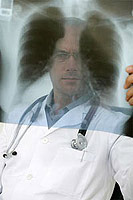 Needle biopsy. The needle is injected into the tumor formation and get a piece of fabric, which is then investigated under a microscope for tumor cells.
Needle biopsy. The needle is injected into the tumor formation and get a piece of fabric, which is then investigated under a microscope for tumor cells.
Bronchoscopy. Flexible tube with illuminator is introduced through the mouth in the bronch. This method allows not only to detect the tumor, but also take her piece or liquid to search for cancer cells.
MediastinoCopy. The procedure is carried out under general anesthesia (anesthesia). A small incision is done on the front surface of the neck and separate lymph nodes are removed along the trachea. The subsequent microscopic examination of the remote tissue allows you to confirm or eliminate the tumor process.
Thoraccentsis and thoracoscopy. These methods make it possible to obtain fluid in the pleural cavity and find out its cause (cancer or benign states, such as heart failure or infection).
Bone marrow biopsy. With the help of a special needle, a small piece of bone and bone marrow from the pelvic bone is obtained to search for tumor cells.
Blood chemistry Helps to find out whether cancer spread to the liver or bone.
Usually, the symptoms of lung cancer do not appear until the tumor becomes common. However, in some cases, the lung cancer is detected at an early stage, but it is found randomly upon examination for other diseases. For example, the tumor can be detected during radiography or computer tomography of the chest, bronchoscopy (inspection of bronchi inside using a special device - bronchoscope) or cytological studies of sputum, made about other reasons in patients with heart disease, lung inflammation, etc.
Screening - This is the use of examination methods in order to identify the disease in people who have no signs of illness. For example, microscopic examination of the cervical smear is used for early diagnosis of cervical cancer.
Due to the fact that lung cancer is usually already out of the lungs before the appearance of the symptoms of the disease, effective screening for the purpose of early diagnosis could save many lives.
The value of radiographs and microscopic studies of sputum in order to identify cancer cells have been studied for many years. Research results showed that these methods do not allow to detect many cases of lung cancer in the early stages and do not increase the chances of the cure. Therefore, the screening of lung cancer is not a routine (usual) practice for the population and even for persons with increased risk, for example, for smokers.
A new X-ray method has appeared - spiral low-altitude computed tomography, allowing to identify lung cancer in the early stages among smokers. However, it has not yet been proven that this method will give the opportunity to reduce the likelihood of death from lung cancer.
People who smoke at the present time must be aware that the best way to avoid death from lung cancer is to stop smoking. Detection of changes in the DNA of bronchial cells may help in the early diagnosis of lung cancer, however, the importance of such research has not yet been proven.
People who smoked earlier or continue to smoke at present, as well as those that were under the influence of tobacco smoke or worked with materials that increase the risk of lung cancer, have an increased risk of lung cancer.

